7am: First guests welcomed
Our tour guide, Thang Vo, showed up at Tan Son Nhat International Airport early that morning, ready to welcome our first Japanese client from Tokyo. Clear skies and a gentle breeze created a pleasant atmosphere – perfect conditions for this encounter. Thắng Võ held aloft a sign bearing his client’s name as he waited for his arrival. The client, Mr. M, currently works as a web director and was visiting Vietnam for the first time.
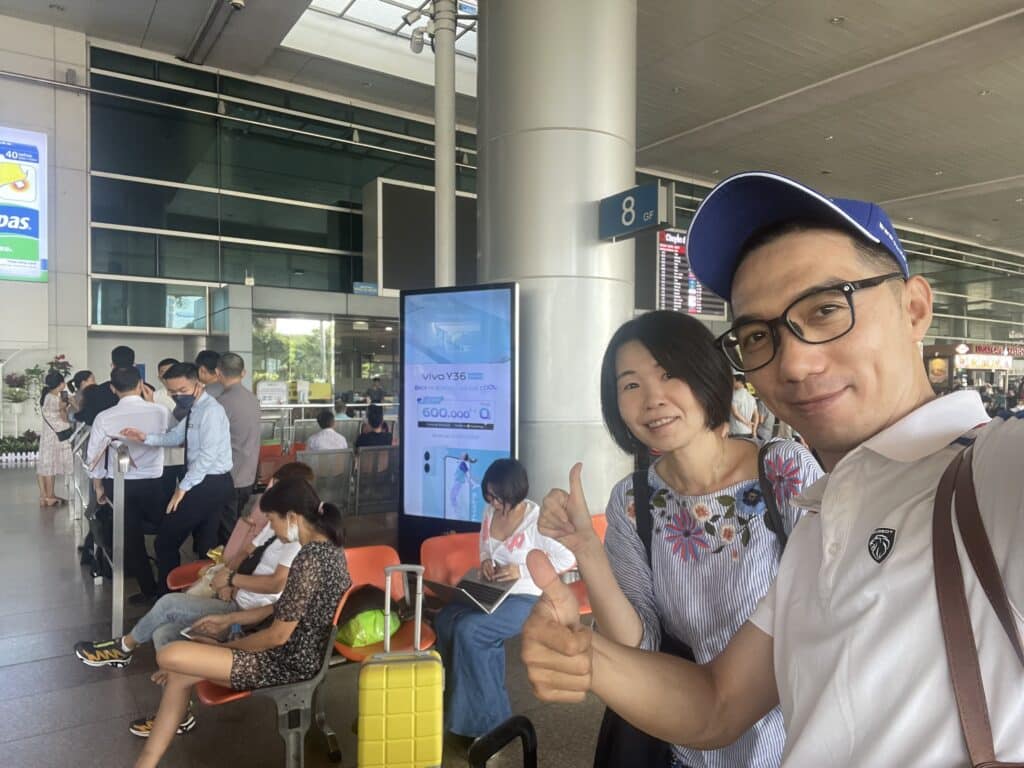
11am: Enjoy a Vietnamese lunch and coffee
After checking in at the hotel, we decided to enjoy some Pho, a dish loved by locals and foreign visitors alike. Afterwards, we decided to stop by the garden restaurant to enjoy a cup of strong Vietnamese coffee, a characteristic habit of Vietnamese culture, and the spacious and tranquil atmosphere was the perfect place to relax and unwind after a long flight from the land of the sun.
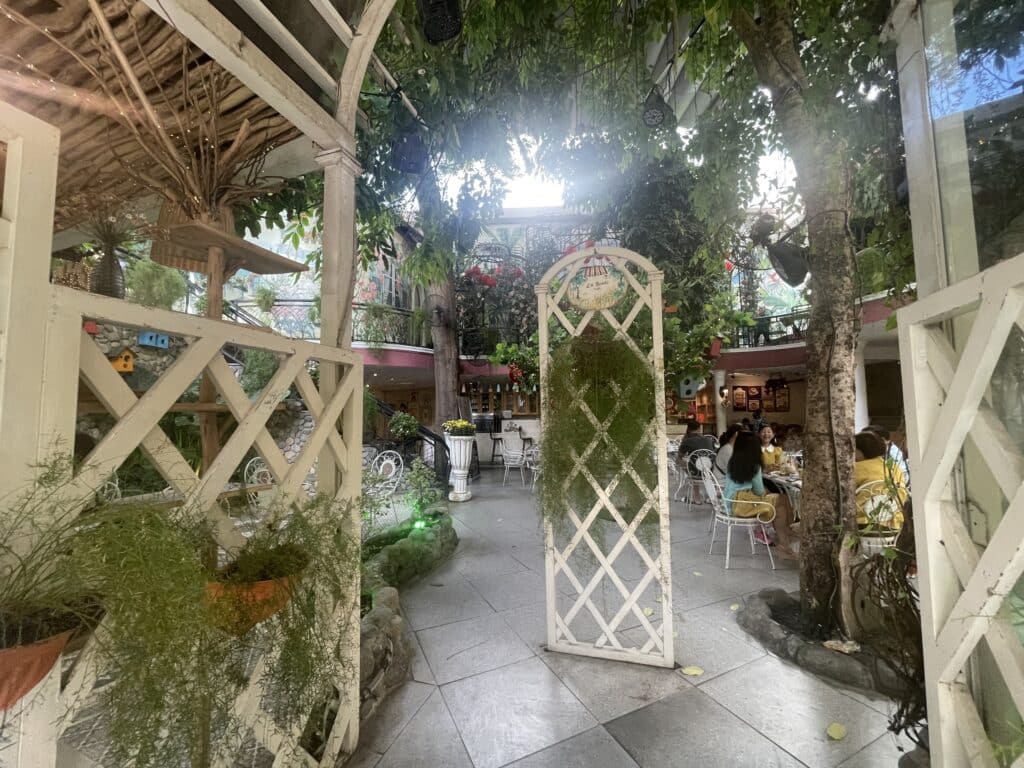
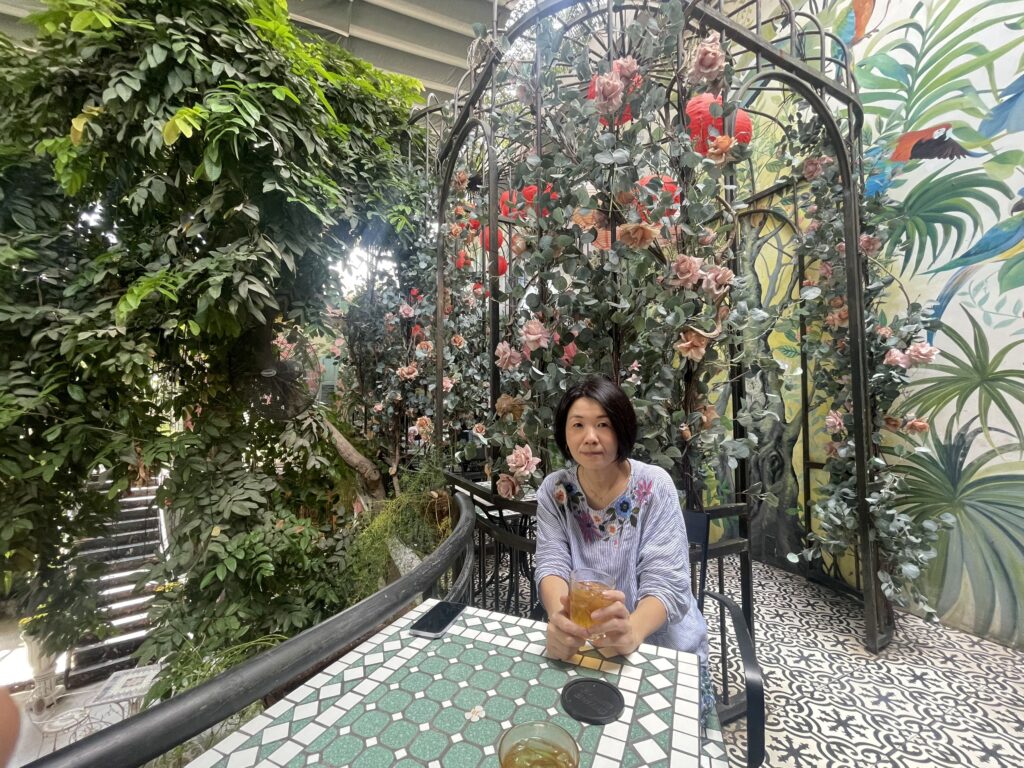
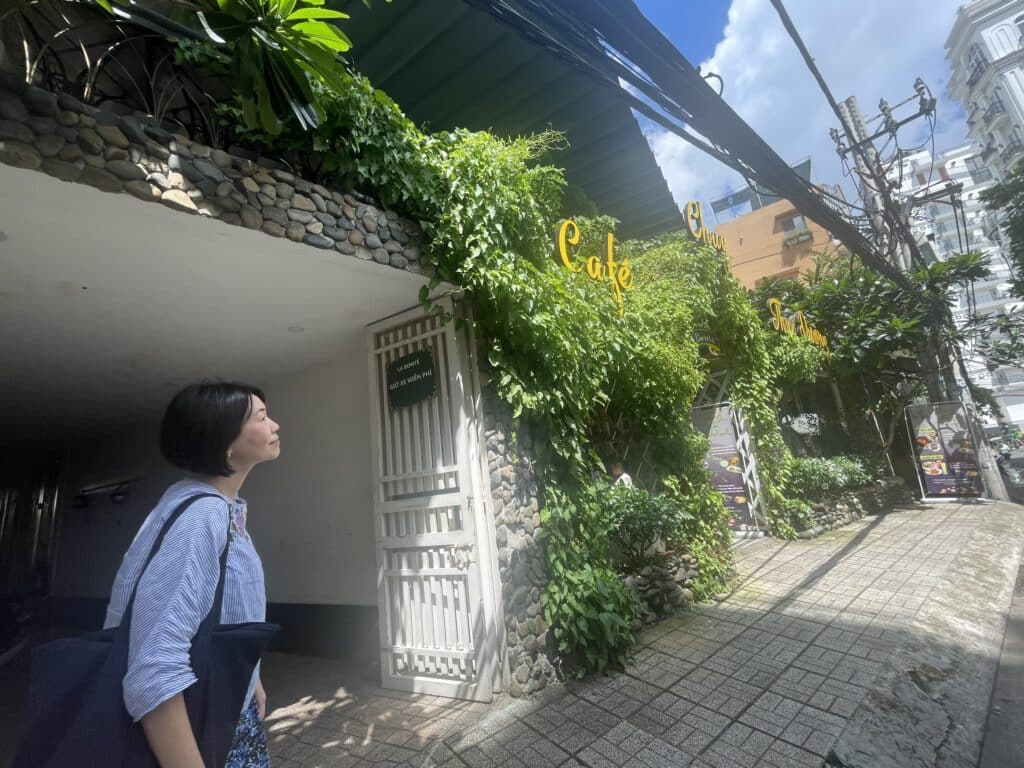
14:00: Welcome the second client and visit the company
As night fell, we welcomed our last guest, the third guest, for this Viet Biz Tour. Mr. F had visited Hanoi before, and this was his first time in Ho Chi Minh City. It was also his first trip abroad after a long period of not being able to go abroad due to Covid.


7pm: Dinner with the last guest
That same afternoon, our second client, a refined gentleman, arrived on a flight from Osaka. Mr. I had never visited Vietnam before, and this was his first trip abroad in over 20 years.
After checking in at the hotel, we visited a labor export company. Here, we toured the facilities where we received Japanese language and technical training. We were introduced to the training process and the advantages that a typical Vietnamese laborer has in the Japanese market.
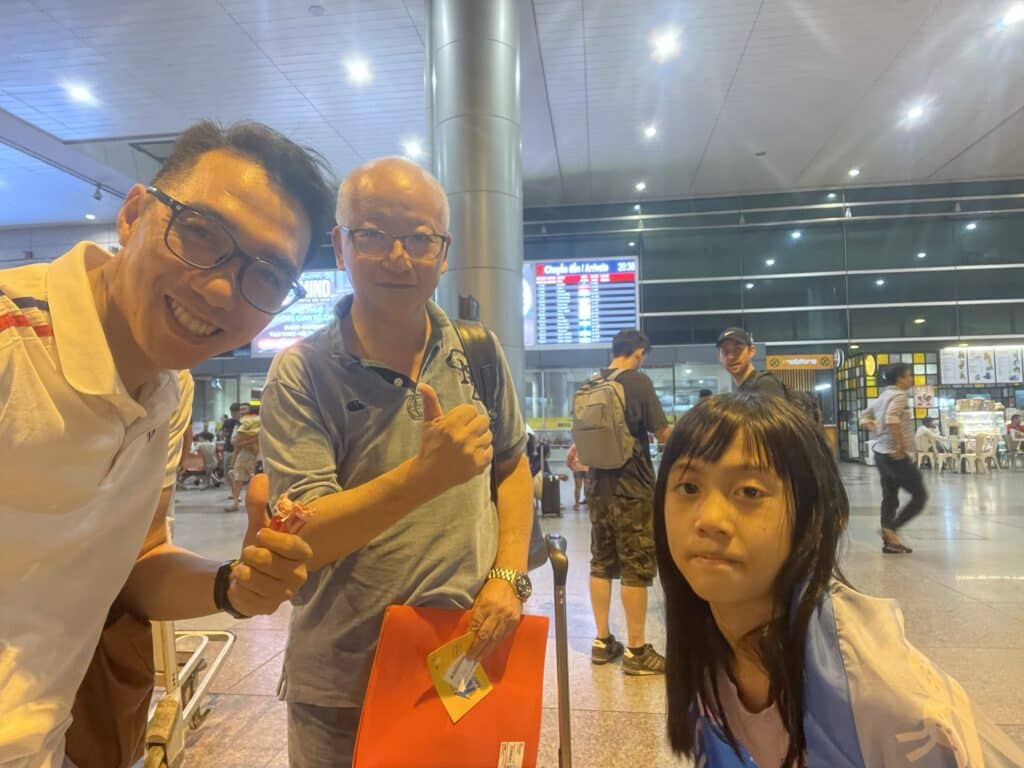
We had dinner together and reviewed our Viet Biz Tour schedule for September. Once dinner was over, our guests returned to their accommodation to regain their energy after a day of traveling both domestically and internationally.
Welcoming guests from Japan, this itinerary kicks off a week of exploration and visits to Ho Chi Minh City, Da Nang and Hanoi. The trip is packed with planning and activities, offering plenty of opportunities to explore and discover the culture, history, people and land of beautiful Vietnam.
==
…

Tan Son Nhat Airport (IATA code: SGN) is one of the most important and largest airports in Vietnam. The airport is located in Tan Binh District, Ho Chi Minh City, about 6 km north of the center of Ho Chi Minh City, and is the main international airport in the economically important region of southern Vietnam. Traveling from the airport to the city center takes about 15 to 30 minutes by car. Below is some basic information about the international airport Tan Son Nhat.
History: Tan Son Nhat Airport was built during the French colonial period in the 1930s and has undergone many expansions and upgrades to meet the ever-increasing demand for passenger and cargo traffic.
Infrastructure: The airport has one main and one secondary runway and a number of terminals serving domestic and international passengers. The airport infrastructure is regularly improved to ensure the safety and comfort of passengers.
Size: Tan Son Nhat International Airport is one of the largest airports in Vietnam, handling millions of passengers every year. The airport is an international destination with many flights from many cities and countries around the world.
Airlines: Tan Son Nhat Airport is the operating hub for many international and domestic airlines, including Vietnam Airlines, VietJet Air and Bamboo Airways.
Services: The airport provides all the facilities and services to its passengers such as restaurants, shopping facilities, lounges, taxi services, and car rental services.
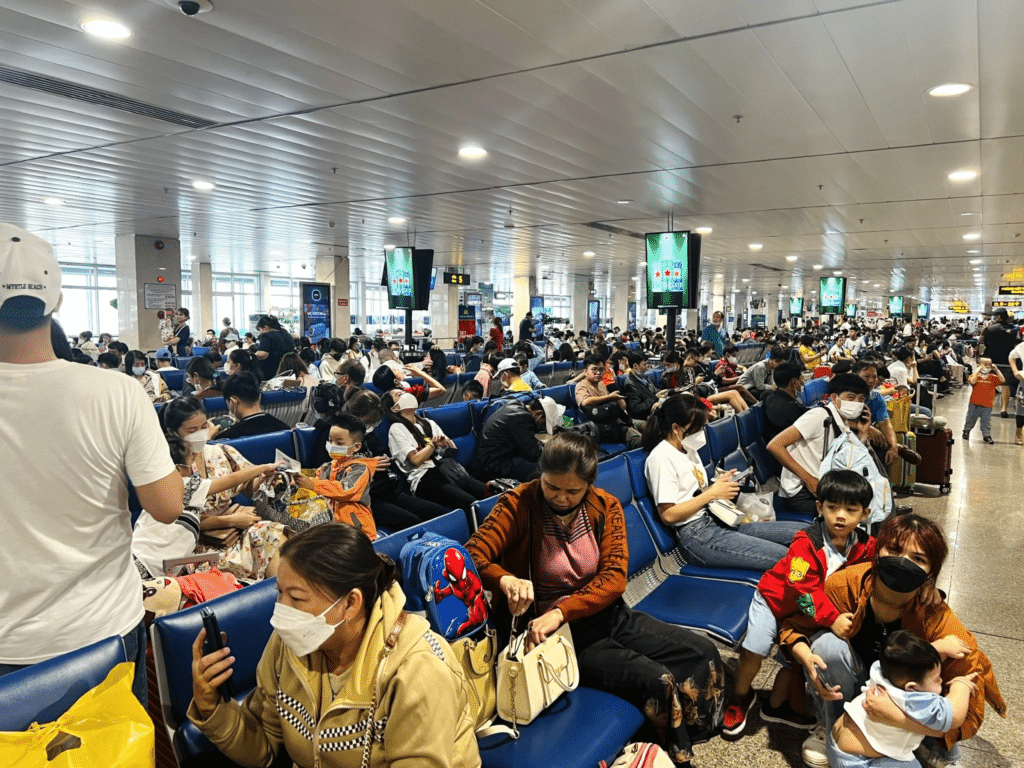
According to statistical data for 2022-2023, Tan Son Nhat International Airport handled a total of approximately 364,800 flights, of which approximately 99,290 were international flights, carrying approximately 56.8 million passengers, of which approximately 14.4 million were international passengers.
Tan Son Nhat International Airport plays a key role in connecting Vietnam to the rest of the world and is one of the key gateways for visitors and business activities in Ho Chi Minh City and the surrounding area.
==
…
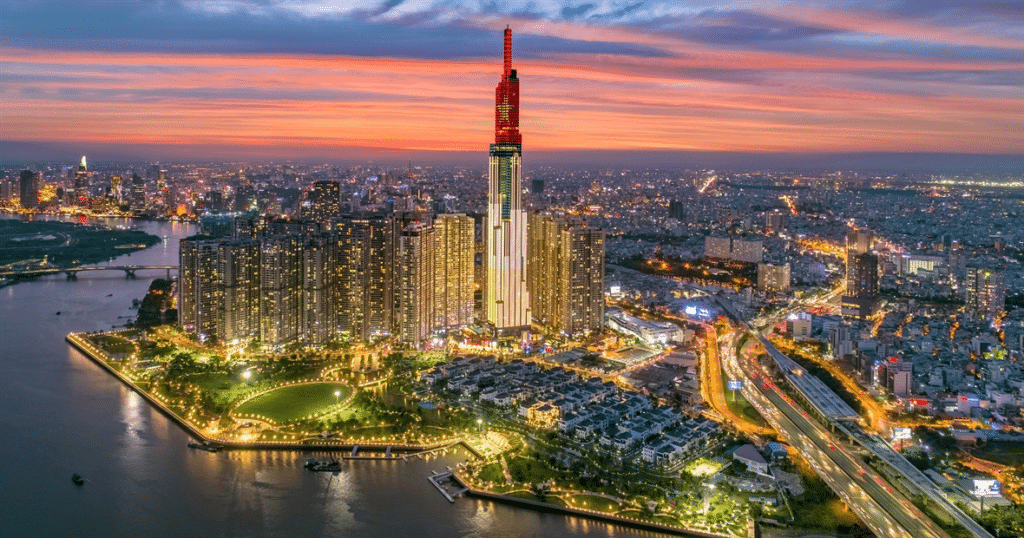
Ho Chi Minh City, commonly known as HCMC or Saigon, is the largest and most economic, cultural and political center of Vietnam. It is one of the most dynamic and developing cities in Southeast Asia and an important destination for tourists and investors from all over the world. Below are some notable points about HCMC:
Geographic location : HCMC is located in the south of Vietnam, on the east coast, with an extensive river system with the Saigon River running through the city. It is a strategic hub for trade and tourism.
Population : TP.HCM will be a metropolis with over 8 million people in 2021, making it the most populous city in Vietnam.
Economy: TP.HCM is the economic centre of Vietnam and contributes significantly to the country’s Gross Domestic Product (GDP). The city has a diversified economy including industry, financial services, tourism and manufacturing.
Culture and Education: TP.HCM has many universities, research institutes and is the cultural, artistic and educational centre of Vietnam. The city is also known for its museums, theatres and arts events.
Tourism: TP.HCM has many attractive tourist attractions such as 23/9 Park, Saigon Notre Dame Cathedral, Ben Thanh Market, French Quarter, etc. The city is also a good starting point for exploring other famous tourist destinations such as Dong Nai, Vung Tau and Can Tho.
Transportation: TP.HCM has a developed transportation system with many major roads and bridges. The city’s Tan Son Nhat International Airport is one of Vietnam’s important gateways.



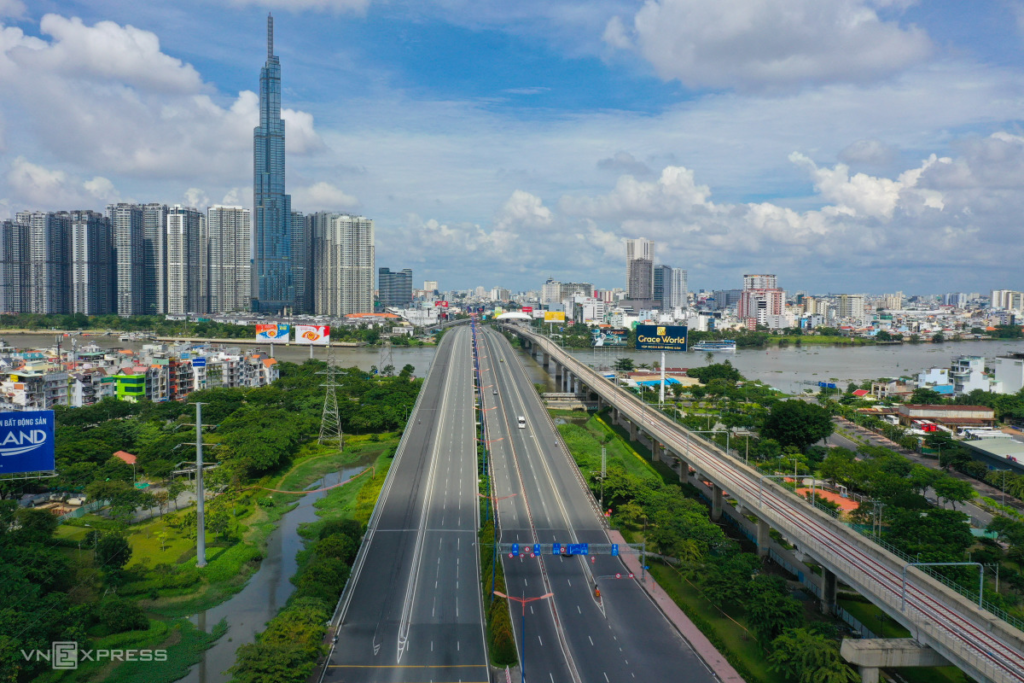

Ho Chi Minh City is a diverse, vibrant and rapidly developing city that attracts people and tourists from all over the world. It is one of the important economic and cultural centers in the Southeast Asian region.
======================================================
■ About Vietnam


Vietnam, officially the Socialist Republic of Vietnam, is a country located in Southeast Asia. Below is some basic information about Vietnam.
Geographical location: Vietnam is located in the eastern part of the Indochina Peninsula, facing the East China Sea and the South China Sea. The country shares borders with many countries, including China, Laos, and Cambodia.
Population: Vietnam has a population of approximately 96 million as of 2021, making it one of the most populous countries in the Southeast Asian region.
Capital: Vietnam’s capital is Hanoi, and its largest city and economic centre is Ho Chi Minh City (Saigon).
History: Vietnam is a country with a diverse history dating back to ancient times. It has gone through various periods, including the dynasty era, French colonial rule, and the Vietnam War, before going on to the present day with economic reform and development.
Economy: Vietnam has a rapidly developing economy with developing industries such as manufacturing, agriculture, financial services and tourism. The country has become one of the popular destinations in the region attracting foreign investment.
Culture: Vietnam has a diverse and rich culture, characterized by traditional culture, arts, literature and unique cuisine. The official language is Vietnamese, and Buddhism and Christianity are widely practiced in the country.
Tourism: Vietnam is a popular tourist destination with beautiful natural landscapes, a long coastline, historical and cultural heritage, and attractive cities such as Hanoi, Halong Bay, Hue and Ho Chi Minh City.

Vietnam is a country rich in culture and history, renowned for its beautiful natural scenery and tantalizing cuisine, and is expected to become one of the fastest growing economies in Asia.
■ Vietnam-Japan relations

The relationship between Vietnam and Japan is one of the important and positively developing relationships in the Asian region. These two countries established diplomatic relations in 1973 and have since developed a diverse and deep relationship in many fields. Below are some notable points of this relationship.
Economic Relations: Economic relations between Vietnam and Japan are going from strength to strength. Japan is Vietnam’s main trading partner and the two countries have many joint investment projects in sectors such as manufacturing, technology, energy and infrastructure.
Development cooperation: Japan provides a lot of development assistance to Vietnam and implements joint development projects, including infrastructure construction, skilled worker training, and support in the fields of education and health.
International Cooperation: Both countries uphold international law and the principle of freedom of the seas. Vietnam and Japan cooperate in many international organizations, including the United Nations, ASEAN, and Asia-Pacific Economic Cooperation (APEC).
Culture and Education: Cultural and educational ties between the two countries are also developing. Vietnamese people are interested in Japanese culture and are learning the Japanese language, and universities and high schools in both countries offer study programs and student exchanges.
Security and defense cooperation: Vietnam and Japan are strengthening cooperation in the areas of security and defense to maintain regional stability and security.
Recently, Vietnamese President Vo Van Tuong and his wife paid an official visit to Japan from November 27 to 30, 2022. The President and Japanese Prime Minister Fumio Kishida today issued a joint statement on “Comprehensive Strategic Partnership for Peace and Prosperity” in Asia and around the world.
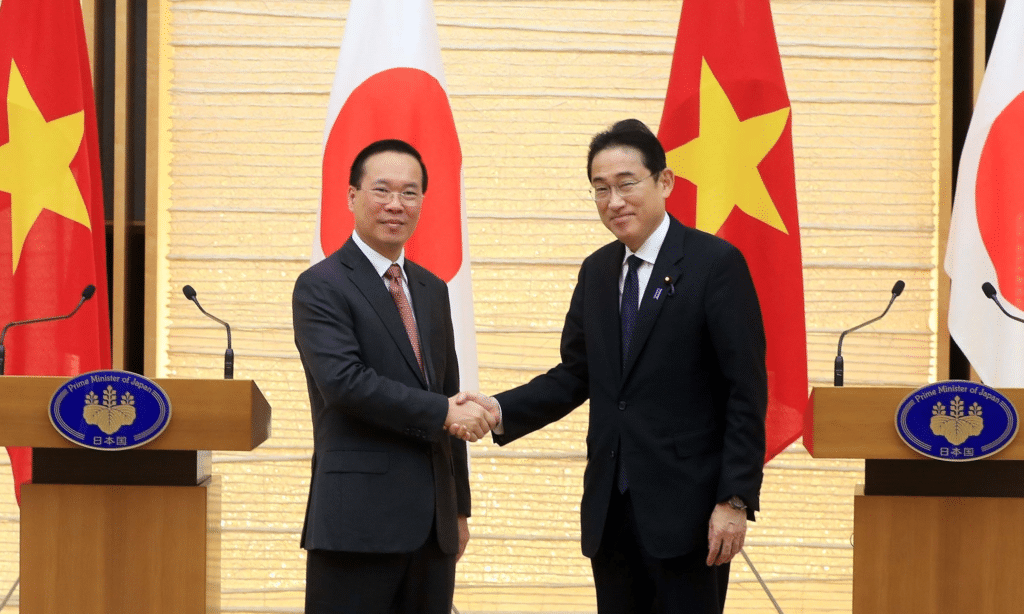
Vietnam and Japan agreed on strengthening cooperation areas in the future, including dialogue and multi-level contacts, security and defense, economic cooperation, human resource development, culture, tourism, regional and people-to-people exchanges, energy, environment, science and technology, green transformation, digital transformation, innovation, as well as regional and international issues and many other areas.
The relationship between Vietnam and Japan is seen as a good example of a strategic partnership in the Asian region and is seen as having the potential to develop strongly in the future.
■ 50 years of Vietnam-Japan relations
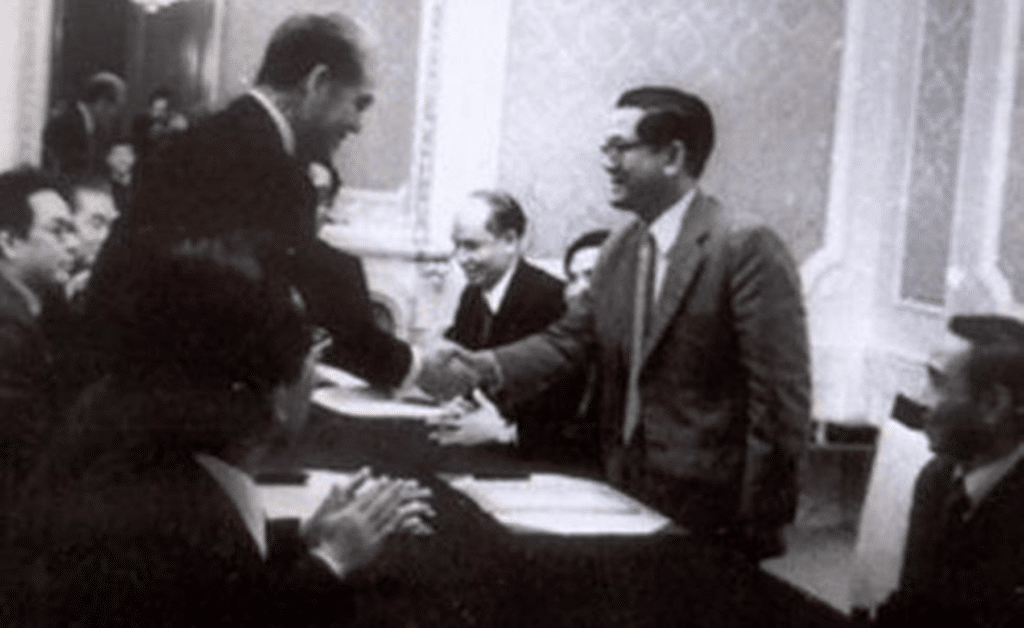
Vietnam and Japan established diplomatic relations at a signing ceremony held in Paris, France on September 21, 1973. 2023 marks the 50th anniversary of this momentous event, but in fact, the history of Vietnam-Japan relations is many times thicker than half a century.
In the 17th century, many Japanese merchant ships anchored at Hoi An Port, and exchanges and trade took place here, leading to the formation of a Japanese town. Among them was the businessman Sotaro Araki, who married Princess Ngoc Hoa, daughter of Lord Nguyen Phuc Nguyen, and brought her to live in Nagasaki, Japan.
At the beginning of the 20th century, in January 1905, revolutionary Phan Boi Chau organized the Dong Du movement and brought about 200 young Vietnamese patriots to study in Japan, where they received great support during difficult times.
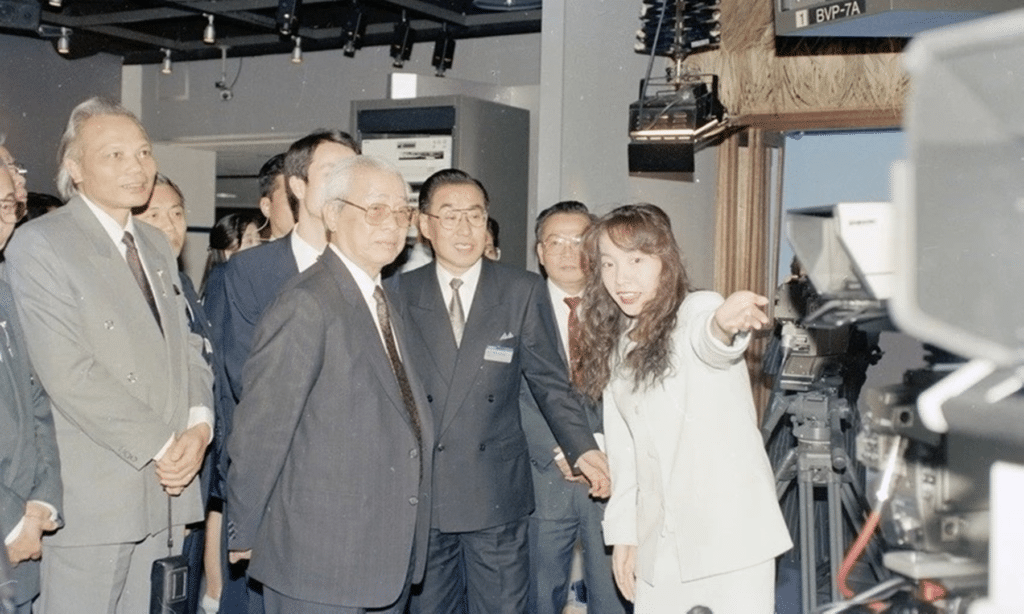
In 1993, Prime Minister Vo Van Kiet became the first Vietnamese Prime Minister to visit Japan.
Since the establishment of relations, the two countries have continuously promoted and strengthened cooperation. Japan has now become Vietnam’s major and important partner in all fields, including politics, economy, defense, security, culture, education, labor and tourism.
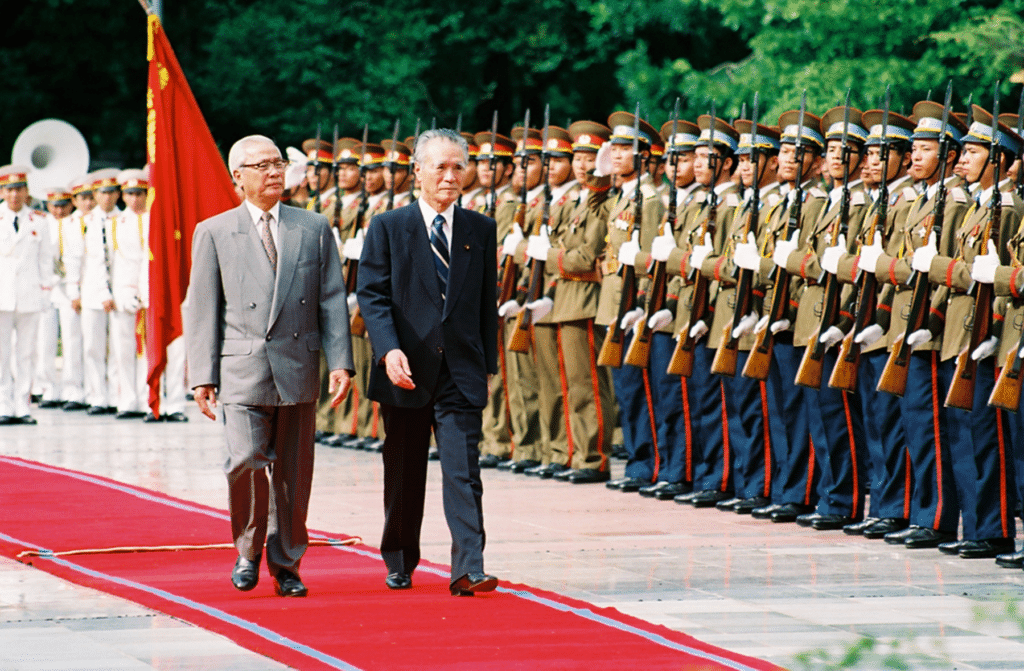
In 1994, Prime Minister Tomiichi Murayama became the first Japanese prime minister to make an official visit to Vietnam.
Japanese prime ministers have visited Vietnam a total of 12 times, the Speaker of the House of Representatives twice and the President of the Senate twice.
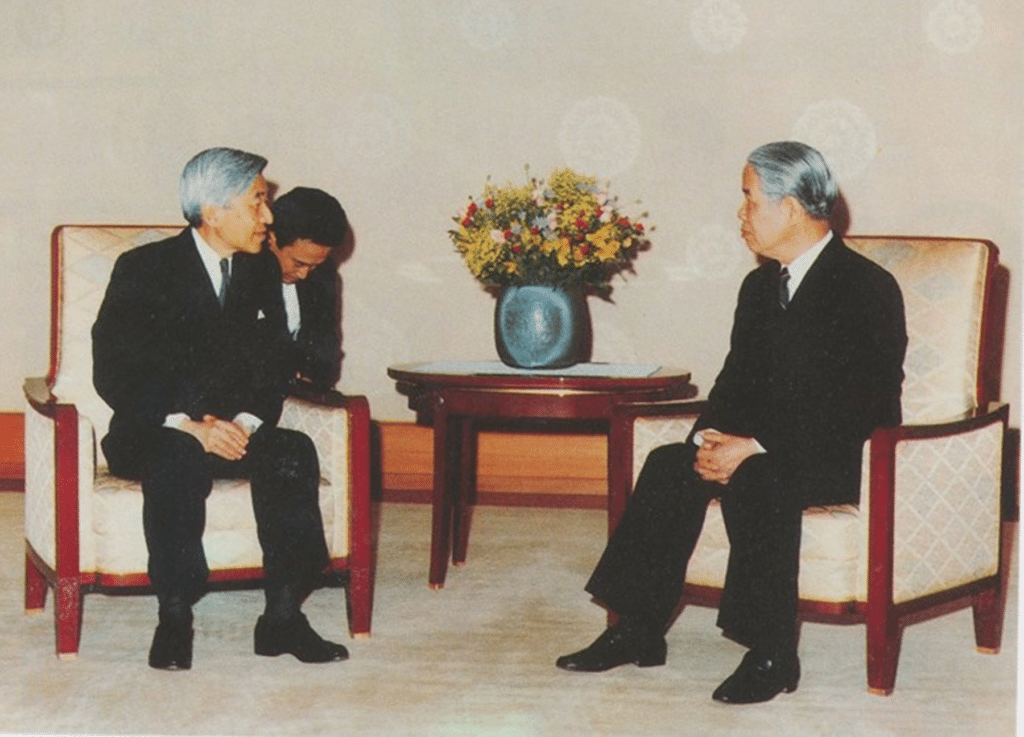
In 1995, General Secretary Do Muoi became the first General Secretary of Vietnam to visit Japan. Japan was also the first G7 country to welcome an official visit by the General Secretary of Vietnam.
Since 1973, Vietnam’s General Secretaries have visited Japan four times, its Presidents four times, its Prime Ministers 21 times, and its Speakers of the National Assembly four times.
Japan resumed its ODA assistance to Vietnam in 1992 and is now Vietnam’s largest ODA donor, second largest labor cooperation partner, third largest investor, third largest tourism partner and largest trading partner, ranking fourth in the country.
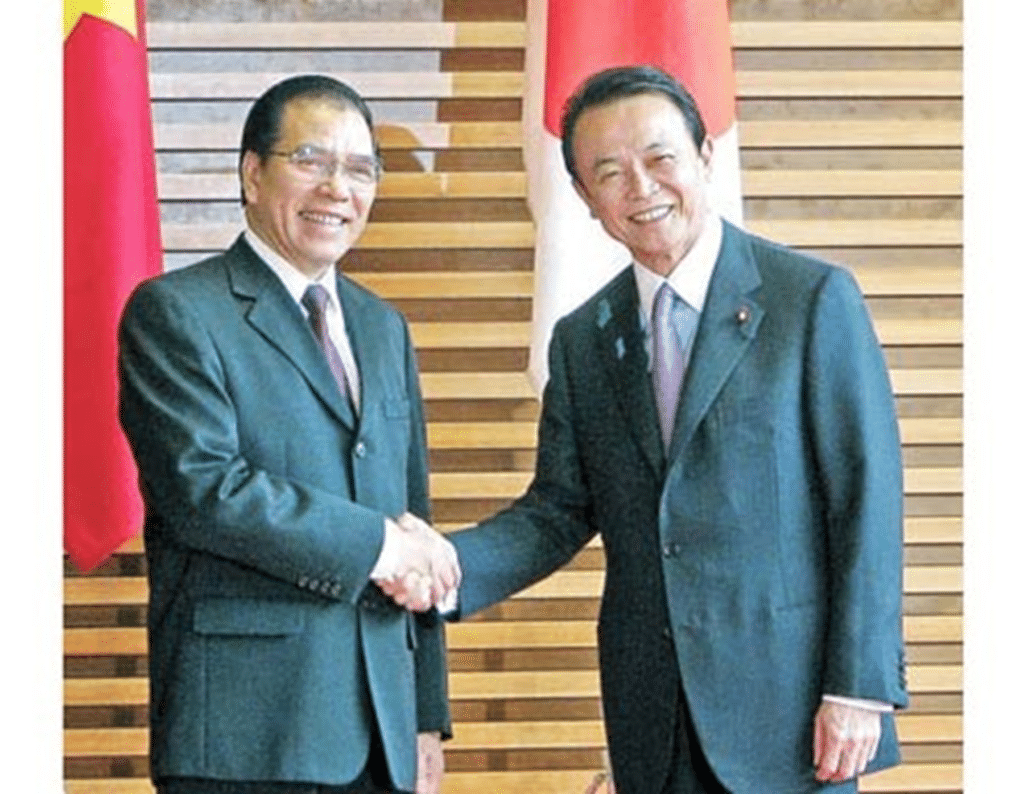
In 2009, General Secretary Nong Duc Manh paid an official visit to Japan. He and Japanese Prime Minister Taro Aso signed a joint statement on “Strategic Partnership for Peace and Prosperity in Asia.” Japan became the first G7 country to establish a strategic partnership with Vietnam.
Japan is also the partner with which Vietnam has concluded the most bilateral and multilateral free trade agreements, including the ASEAN-Japan Comprehensive Economic Partnership (AJCEP), the Vietnam-Japan Economic Partnership Agreement (VJEPA), the Comprehensive and Progressive Agreement for Trans-Pacific Partnership (CPTPP), and the Regional Comprehensive Economic Partnership (RCEP).
The two countries have given each other the most preferential tax rates since 1999. In the first nine months of 2023, Vietnam’s import and export turnover with Japan reached more than $32.9 billion.
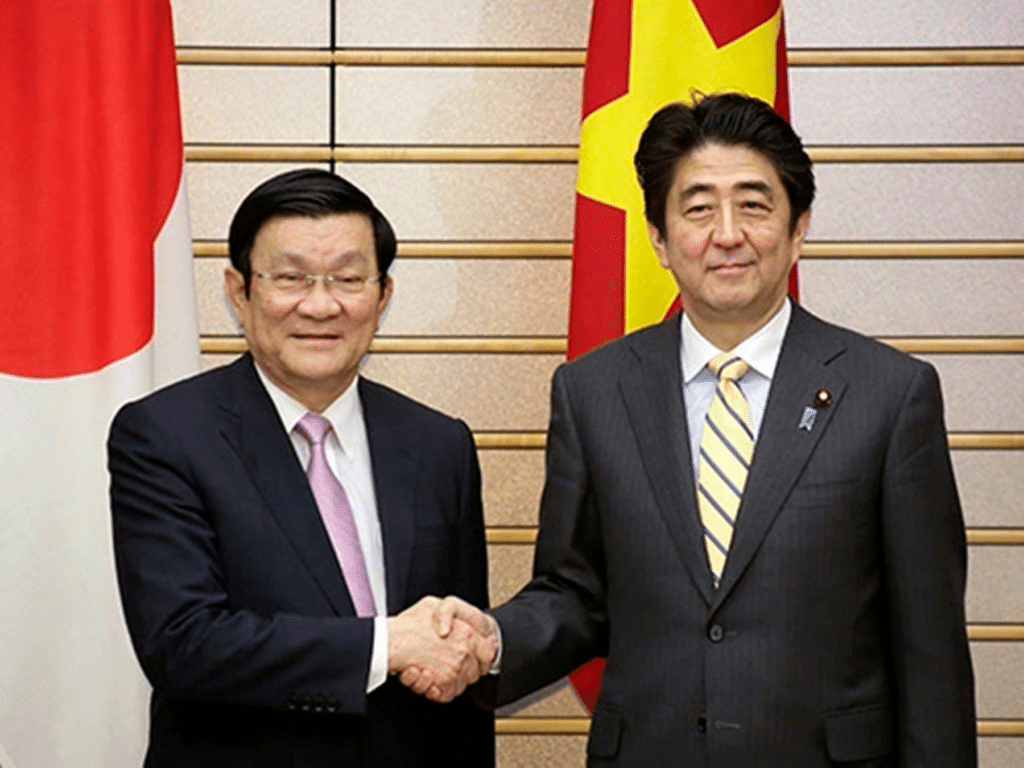
During a state visit to Japan in March 2014, President Truong Tan Sang and Prime Minister Shinzo Abe signed the Vietnam-Japan Joint Statement on “Extensive Strategic Partnership for Peace and Building Prosperity in Asia.”
Cumulatively through September 2023, Japan’s FDI into Vietnam reached $71.3 billion with 5,198 valid projects, ranking third among 143 countries and territories investing in Vietnam. In the first nine months of this year, total Japanese FDI into Vietnam reached about $2.9 billion, up 50 percent from the same period last year.
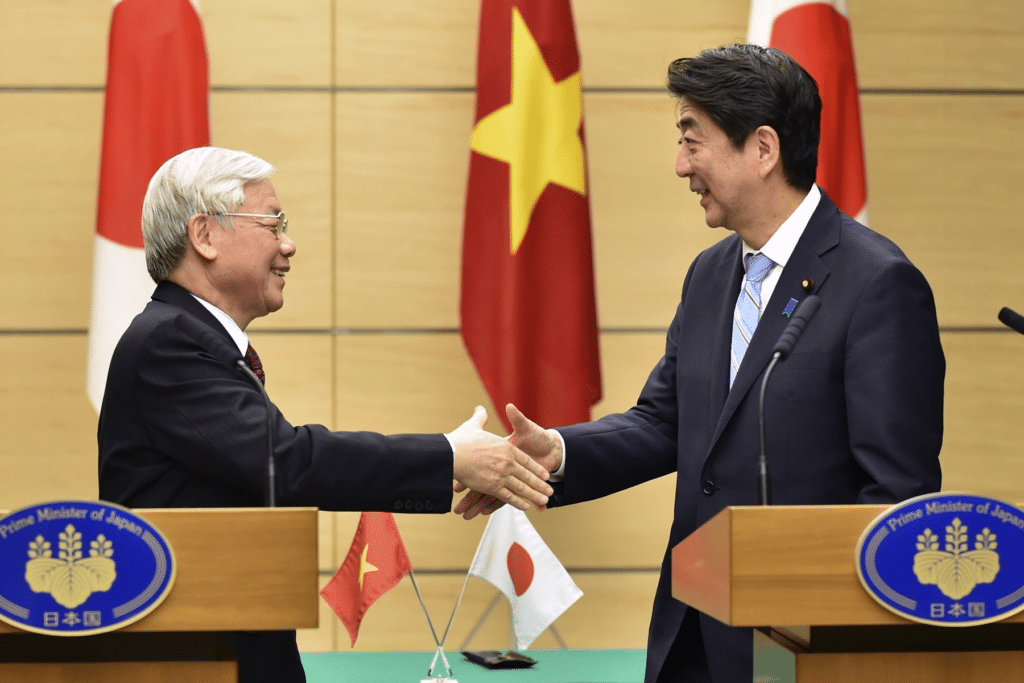
During his official visit to Japan in September 2015, General Secretary Nguyen Phu Trong and Prime Minister Shinzo Abe issued a statement on a common vision for Vietnam-Japan relations. They confirmed that Vietnam and Japan are each other’s important partners, share many similar fundamental interests, and that the development of one country creates favorable conditions for the development of the other.
In terms of education cooperation, Vietnam was the first country in the world to introduce Japanese language into secondary education since 2003 and into primary schools since 2019, while Japan is one of the largest donors to industry and education training for Vietnam through its ODA programmes.
The number of Vietnamese students in Japan has now reached more than 51,000. Japan has helped upgrade four Vietnamese universities to quality universities and is also cooperating to establish the Vietnam-Japan University, which will nurture high-quality Vietnamese human resources in the fields of science and technology, engineering, management and services.
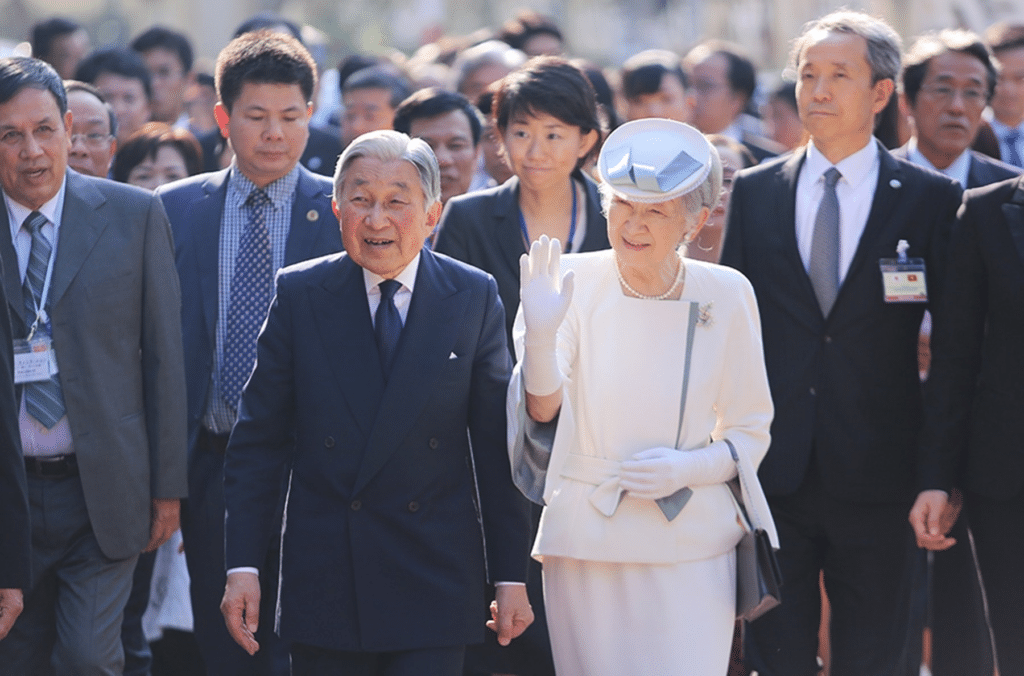
Emperor Akihito and Empress Michiko visited Vietnam in March 2017 before abdicating, a historic first visit that is seen as particularly significant in promoting ties between the two countries.
During their visit, Their Majesties the Emperor and Empress visited the ancient capital of Hue, where they listened to a Hue Imperial Music Performance and visited the monument to patriot Phan Boi Chau.
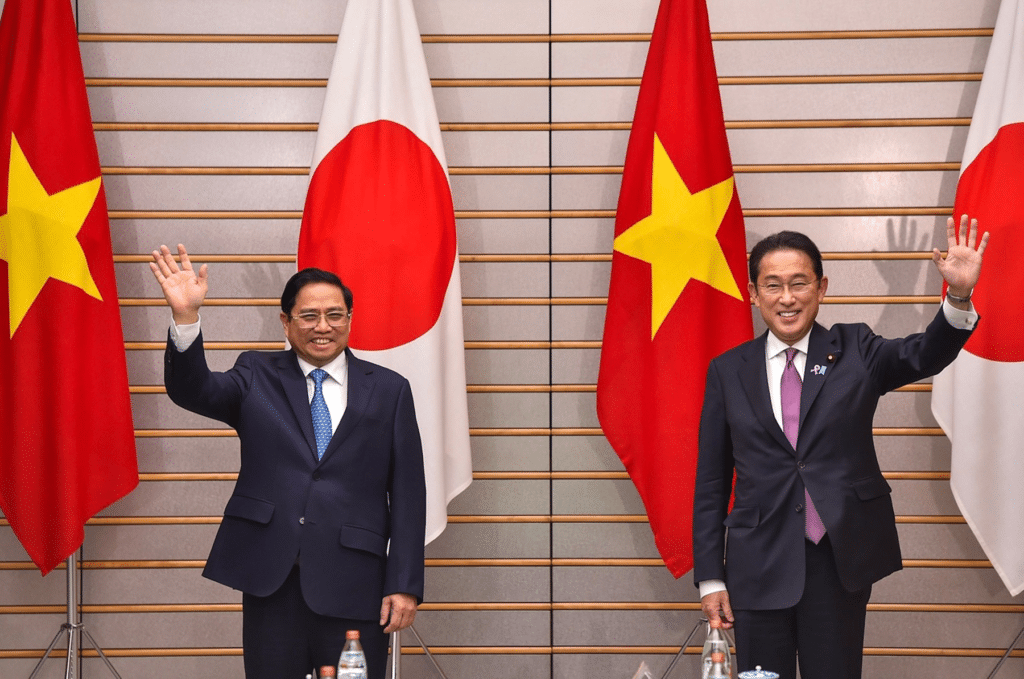
Prime Minister Pham Minh Chinh will officially visit Japan in November 2021. The two countries issued a joint statement to launch a new stage of the Vietnam-Japan extensive strategic partnership for peace and prosperity in Asia.
Currently, the Vietnamese community in Japan numbers approximately 520,000, making it the second largest in the country after China. Vietnamese currently live, work and study in 47 provinces and central cities in Japan, with the majority concentrated in Aichi, Tokyo, Osaka, Saitama, Chiba, Kyushu and Fukuoka prefectures.

Prime Minister Pham Minh Chinh presented Japanese Prime Minister Fumio Kishida with a calligraphy piece entitled “Sincerity, Affection and Trust” during his visit to Vietnam in April 2022.
It was also decided that this will become the new motto for the bilateral relations that the two countries aim for.
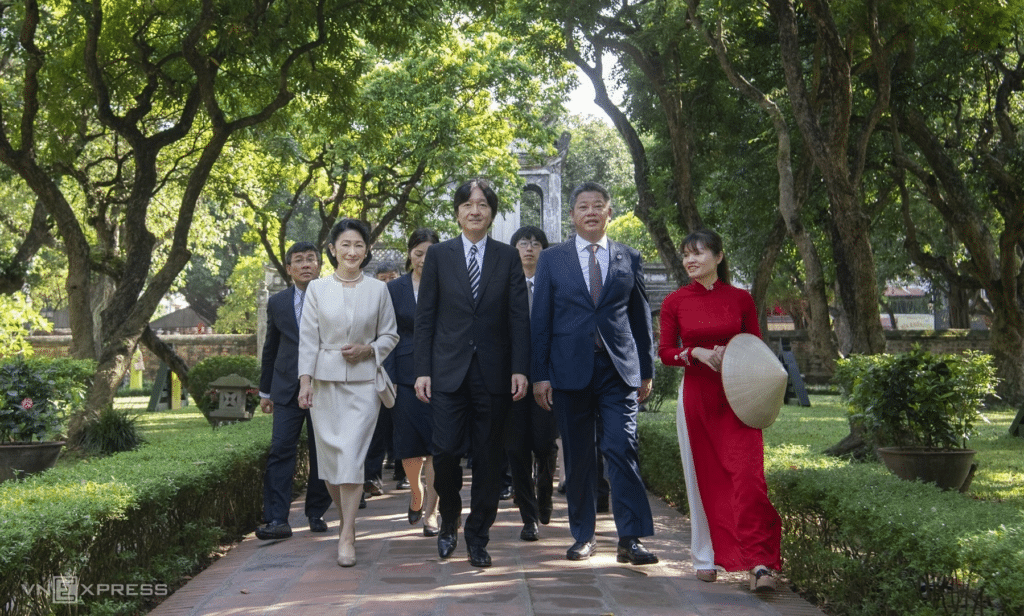
In September, Japan’s Crown Prince Akishino and Princess Kiko visited Vietnam. This was the crown prince and princess’ first official overseas visit since the COVID-19 pandemic began, and the first visit to Vietnam by a member of the Japanese royal family in six years, coming just in time for the 50th anniversary of the country’s founding, the year Vietnam and Japan established diplomatic relations.

President Vo Van Thuong and his wife paid an official visit to Japan from November 27 to 30. President Kishida and the Japanese Prime Minister issued a joint statement today elevating relations to a “Comprehensive Strategic Partnership for Peace and Prosperity in Asia and the World.”
Vietnam and Japan agreed on strengthened areas of cooperation, including multi-level and multi-level dialogue and contacts; security – national defense; economic ties; human resource development, culture, tourism, regional and people-to-people exchanges; new areas such as energy, environment, science and technology, green transformation, digital transformation and innovation; regional and international issues, and many other areas.
The president called the improvement in ties a “significant event that opens a new chapter” in Vietnam-Japan relations. Prime Minister Kishida asserted that Vietnamese human resources are “indispensable” in Japan’s socio-economic development process.
Source: Internet; https://vnexpress.net/nhung-nac-thang-trong-50-nam-quan-he-viet-nhat-4681179.html


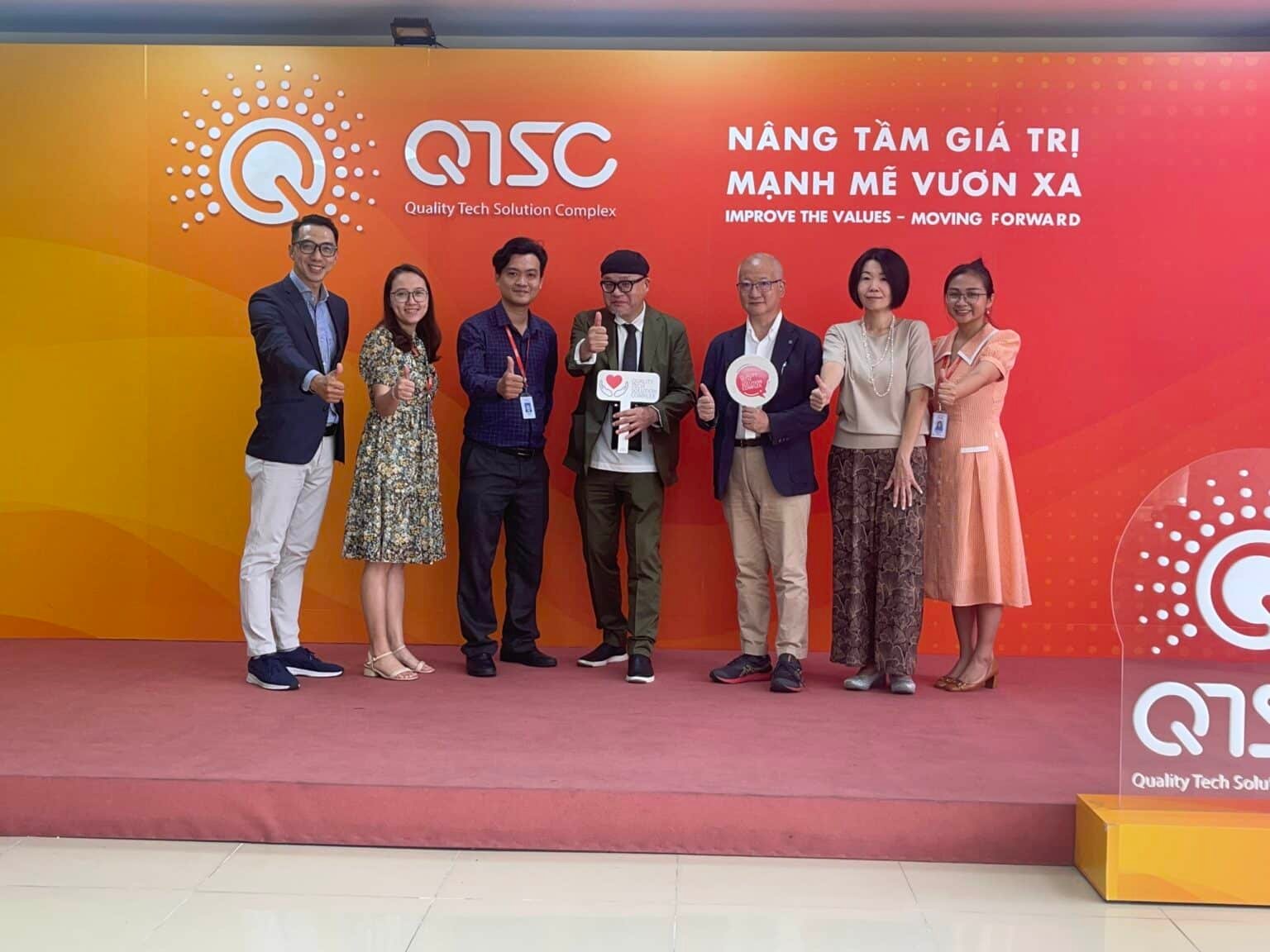
![[Now Recruiting Participants] Vietnam-Japan Connect Club October Online Seminar](https://vjcn.club/wp-content/uploads/2024/10/bc32d119-a052-4fd1-b1b8-136fb4f40fe2.webp)